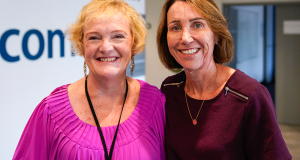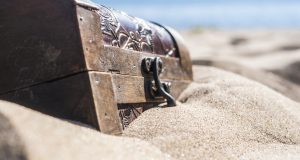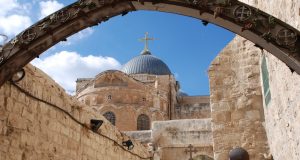THE MOST insidious aspect of prolonged conflict is the total destruction of the lives of survivors.
Once the bullets stop ringing and the staccato of missiles is silenced, the survivors have to try to rebuild their lives from the
rubble.
Teachers who once dreamt of mentoring future leaders have no classrooms in which to impart knowledge; doctors do
not have the tools by which to alleviate suff ering; farmers have to reconstruct plots littered with the debris and ordnance from the war campaign.
The Horn of Africa (encompassing more than 100 million people in Somalia, Ethiopia, Eritrea and Djibouti) has known conflict for most of the last 20 years.
Somalia, in particular, has disintegrated into a collection of fiefdoms and a hotbed of religious extremism.
This is the place the world forgot and collectively hoped would sort itself out.
As a result, the warlords continue to fi ght each other and the emboldened Al-Shabab movement that is loosely affiliated with al-Qaeda.
In the midst of this powderkeg is the budding Transitional Federal Government (TFG) that controls a miniscule segment of
the country.
Inadequately supported by the international community, the TFG is largely ineffective outside a tiny enclave of Mogadishu.
War and famine are the only issues these disparate factions agree on.
Al-Shabab recently lifted the ban on foreign aid agencies assisting the local population ravaged by drought.
Realising the gravity of the situation, the United States has also indicated its willingness to provide relief aid to local populations in areas under the control of the Al-Shabab militia.
Climate Change
Researchers indicate that this drought is part of the larger La Niña climate cycle that led to the recent Queensland Floods.
In the Horn of Africa, the seasonal rains, which are vital for crop production, have been exceptionally poor over the last two years.
In some areas, it has failed to rain at all.
It is the worst drought in East Africa for more than 60 years and more than 11 million people in the region face famine.
With constant conflict making it impossible to farm the little tracts of arable land during these flash rains, people are literally starving to death.
Livestock, the main store of wealth for the pastoral communities in the region, have also been decimated by the drought.
This means the little food that is available is out of reach for all but the ruling warlord-class.
A 90 kilogram bag of maize is now worth fi ve goats, up from one goat 12 months ago.
In the world’s newest nation, the Republic of South Sudan, the looming humanitarian crisis is the dark cloud hanging over the celebrations.
While aid agencies can begin operating freely in the country, they lack the necessary infrastructure to reach remote
areas; road networks, schools, development policies and local government machinery have to be constructed from the beginning.
The situation is far worse in the disputed region of Abyei.
While international agencies are hesitant to explicitly label the actions of North Sudan as genocide, ethnic cleansing is clearly occurring.
Villages are indiscriminately petrol-bombed by gigantic Antonov transport planes and death squads routinely massacre civilians.
There are also tribes from the north being re-settled in the area, planting the seed of future conflict.
With this violence and hunger, survivors face almost certain death as they decide between staying in hope or fleeing
hundreds of kilometres across desert lands to camps in Kenya or Ethiopia.
The people who stay hope that it will rain again and a semblance of normalcy will return.
In the interim, they wait for food relief and contend with the war around them.
Those who choose to leave face a perilous trek to camps in Northern Kenya, which while providing relative security, only
offer morsels of food aid.
This trek typically lasts up to two weeks in the unforgiving sun, across the baked desert.
Their livestock, an embodiment of their achievements, will undoubtedly die, along with the weakest among them – the sick, the old, the very young and pregnant women.
Dabaab Refugee Complex
The light at the end of the tunnel is the massive Dabaab refugee complex; the world’s largest according to the United Nations.
Constructed at the end of 1991, it has a capacity of 90 000 people, far exceeding that of Kakuma (which was featured in
the SBS series Go back to where you came from).
The Dabaab complex currently holds more than 370 000 people and is receiving approximately 1500 refugees each day.
Although Kenya is considered a safe and prosperous African nation, it is struggling with this humanitarian crisis.
The government can barely afford to look after its most vulnerable citizens.
Neither can the aid agencies currently operating in the region which contend with a rising tide of donor fatigue.
The world has poured millions of dollars into Africa, but the majority of this is wasted on administration costs and mismanagement.
As a result Africa in general, and the Horn of Africa in particular, is seen as a lost cause – a monolithic failed state.
This leaves the most vulnerable to starve to death.
The situation appears daunting and it is easier to wait for solutions to be provided by the upper-echelons of government.
But we can all do more today to save a life.
We can donate even two dollars to an aid agency that is committed to getting resources – food, medicines, vaccines, shelters – to those in need.
We can care about climate change because that has a real effect on cyclical environmental phenomena such as El Niña.
We can then demand better foreign aid policies from our political leaders to ensure the money and resources we donate
actually better the lives of those in need.
UnitingWorld is running the Horn of Africa Crisis Appeal to provide relief to the refugees in Dabaab and Kakuma.
Their aim is to raise $50 000.
Donations over $2 are tax deductible.
For more information visit www.unitingworld.org.au or phone 1800 998 122
 JourneyOnline
JourneyOnline






